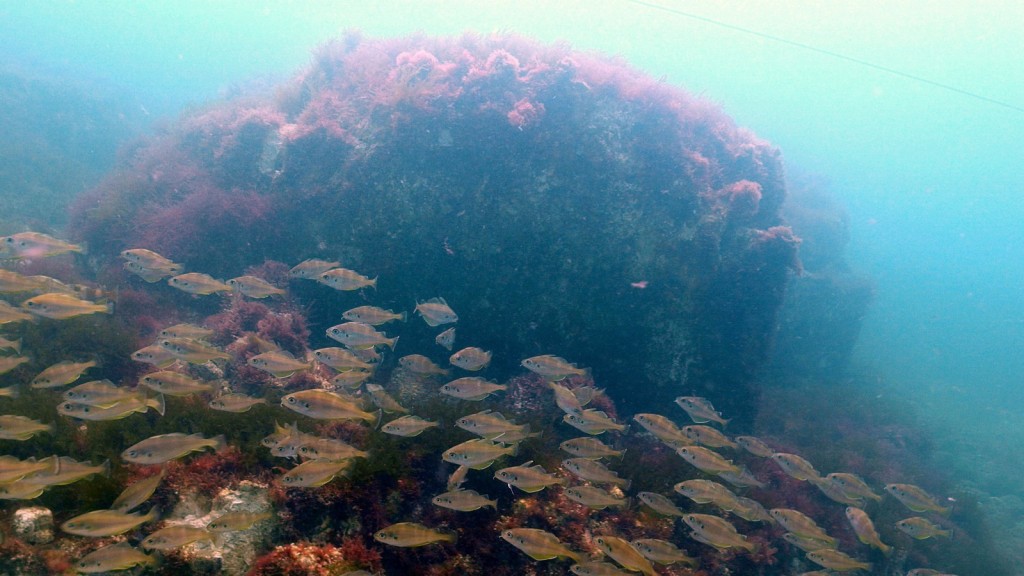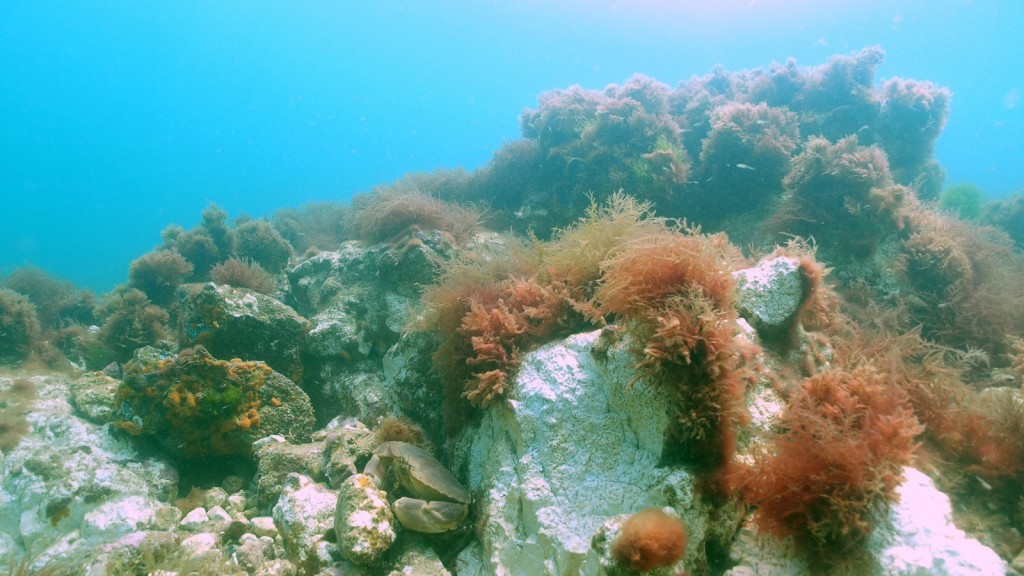
The UK holds almost all the chalk reef in Europe (and probably the world). There are other chalk reefs in Kent and Yorkshire, where they are much flatter, but Norfolk’s chalk reef is the longest by far and probably the most rugged. It is a very special habitat.
The Chalk platform exposed along parts of the North Norfolk coast is not a new landform, in marked contrast to the Chalk platforms along the Channel coast which are being created by undercutting and collapse of often high Chalk cliffs
Geology of the chalk reef

The Norfolk Chalk platform, that extends far inland beneath the deposits of the Crag Sea basin (southeastern margin of the North Sea Basin), may have been created by cliff retreat similar to that seen along the present Channel coast. But that was many millions of years ago and it bevelled the Chalk surface, gradually removing huge volumes. Today, this vast Chalk planation surface underlies much of the county. Towards the eastern coast it dips more strongly, a result of the gradual deepening of the North Sea basin, but further west the slope of the surface is very low, e.g. Cromer, where the present Chalk Reef is developed.
During the period c.3(+) to c.2(-) million years ago, eastern Norfolk was inundated by the Crag Sea. This was shallow, at times extending across the platform as far west as Weybourne and Norwich. Much of the Southern Bight was occupied by a vast delta (Rhine, Elb, Thames, the “Baltic River” etc.), so wave energy would have been much weaker than today during storms. Modest changes in sea level caused the shoreline to advance inland up to 20 km or more, as recorded north of Norwich, or to retreat out onto the exposed floor of the Bight. This was a dynamic environment, but over time a layer of sandy and sometimes gravelly deposits accumulated on the Chalk platform, typically at least a few metres thick.
The Chalk platform has been modified during the last several million years by several types of processes. Which processes were active when, was determined by what lay above the platform. When relative sea level was high, waves and currents were at work, eroding the Chalk by moving flints across its surface, both in tidal channels and beaches, but the platform in the Reef area was probably continuously dry land for a million years(+) from <2 million years to <1 million years. It was also exposed as dry land when Crag sea levels fell due to ice sheets forming or growing bigger elsewhere.(e.g. Greenland) and thus storing seawater on land. During these cold periods the platform was sometimes subject to permafrost, which left it densely fractured and weakened.
Where the platform remained buried beneath a substantial cover of sediments, as during the later part of the Ice Age (very approximately the last 0.75 million years), it was safe from marine erosion and all but the deepest permafrost. During this long period it was mainly protected but subject to groundwater movement from rainwater percolating down through the sediment. This is well seen in the cliffs, where the lowest part of the Weybourne Crag sands and gravels are strongly cemented to the Chalk platform surface by iron oxide (reddish brown) and manganese oxide (almost black).
Where groundwater could flow freely into the Chalk, it enlarged cracks in he rock, producing systems of tunnels. It is these tunnels that are the targets for water boreholes. This is a typical development in limestones, and is called “karst”, after a region in the Balkans. Chalk is a rather weak rock and does not usually have the mechanical strength keep large tunnels open, in contrast to the much harder Carboniferous Limestone with its caverns, but small tubes can survive, though they are rarely seen.
It is just such features that are preserved on the Chalk Reef. These small-scale landforms have developed sometime during the last few hundred thousand years and are now exposed in places on the seabed where the sea has washed away the overlying weak sediments. It is obvious that prolonged exposure to wave and current action will very slowly destroy them. The concern right now is to shield them as much as possible from the far more rapid (in the worst cases, instant) destruction caused by impacts from hard/heavy, often metal, objects. The two main hazards for the reef geomorphology (the physical features) are anchors and lobster/crab pots. The image below shows an instance where a pot has simply smashed a Chalk structure to pieces.

With thanks to Adrian Read, University of Oslo June 2021
Chalk reef specialists
There are many animals and plants found off the coast of Norfolk that would never survive or get a foothold without the presence of the chalk reef to provide a shallow, stable environment to meet their needs. Here are a small selection of these species, concentrating on the more attractive and recognisable ones.
Norfolk purple sponge – Hymedesmia sp

This brightly coloured encrusting sponge has so far never been recorded anywhere in the world outside the Norfolk chalk reef! Even though it is very common on vertical gully walls and large boulders, the life of the reef was so poorly recorded in the past that it was not officially identified until 2011. Although it seems to prefer stretching out over smooth flint boulders, it only grows on those which are on rugged chalk. This could be due to the kind of currents generated, or maybe the slightly different water chemistry caused by slowly dissolving chalk.
Pink goosebump sponge – Dysidea pallescens

This animal is found only on the very ends of the tallest gully walls and outcrops, where the high currents deliver plenty of nutrition and scouring by sand is at a minimum. It is rarely seen, mainly because of the effort needed to swim out 600m from shore before the tide turns! The bright bubblegum pink spikes make it look like it is made of plastic, but it is reassuringly ‘spongy’ when touched.
Spiny squat lobster – Galathea strigosa

The UK’s most colourful squat lobster is more usually seen off the NE or SW coasts of the UK, where it hides deep inside crevices with just the tips of its claws showing. When tempted out, it is an amazing brick red and electric blue animal, with big bristly claws. Less than a handful have been recorded off Norfolk so far. The biggest lives about half a mile off West Runton and is very old, which makes him much calmer than those we’ve seen elsewhere round the UK. We’d be very interested to hear of any others being spotted.
Pinhead squirts – Pycnoclavella stolonialis

These miniscule, sociable creatures like to live on flat chalk bedrock on the tops or sides of gullies which are too deep for seaweeds to grow. Each animal is glassy clear with a minute white cross between its two siphons. They grow in groups of thousands and the white crosses give the rock a ‘sparkly’ sheen, the only clue to their presence unless you are very close up.
Leopard spotted goby – Thorogobius ephippiatus

This lovely fish likes to live in small tunnels and caves in the deepest chalk walls. It generally shares them with large lobsters, acting as waste disposal for the tiny bits of food dropped by its host. That’s if the common prawns, who also share with lobsters, don’t get there first! In return, the goby acts as lookout, warning the lobster of any approaching threat by shooting back inside.
Mossy feather weed – Bryopsis plumosa

This is my favourite green algae, mainly because its complicated feathery structure is all one cell, like a cunningly sculpted balloon animal. Not that these are very big – 5cm high would be a monster! They are incredibly tough though, surviving on highly scoured, flat chalk with fine sand constantly whisking past. Given their fragile single cell state, in which any puncture wound would cause all their insides to squirt out, this seems very brave!
Reflexed grape weed – Gastroclonium reflexum

If you ever get bored enough to look at seaweed distribution maps, you’ll find that this red algae does not exist east of the Isle of Wight, not even in the book showing it completely covering a Norfolk boulder! As with many other species, this is because very few academics pay attention to the East coast. Reflexed grape weed is one of our most common red algaes and it thrives on soft chalk. Each stem tip bends over to reattach and send up a thicket of new stems, just like a bramble patch. A single plant can soon spread to cover any horizontal surface in reasonable light, but never gets more than 3 or 4cm high.
MCZ Interactive Map
Click the image below to see an interactive map of the Marine Conservation Zone.

